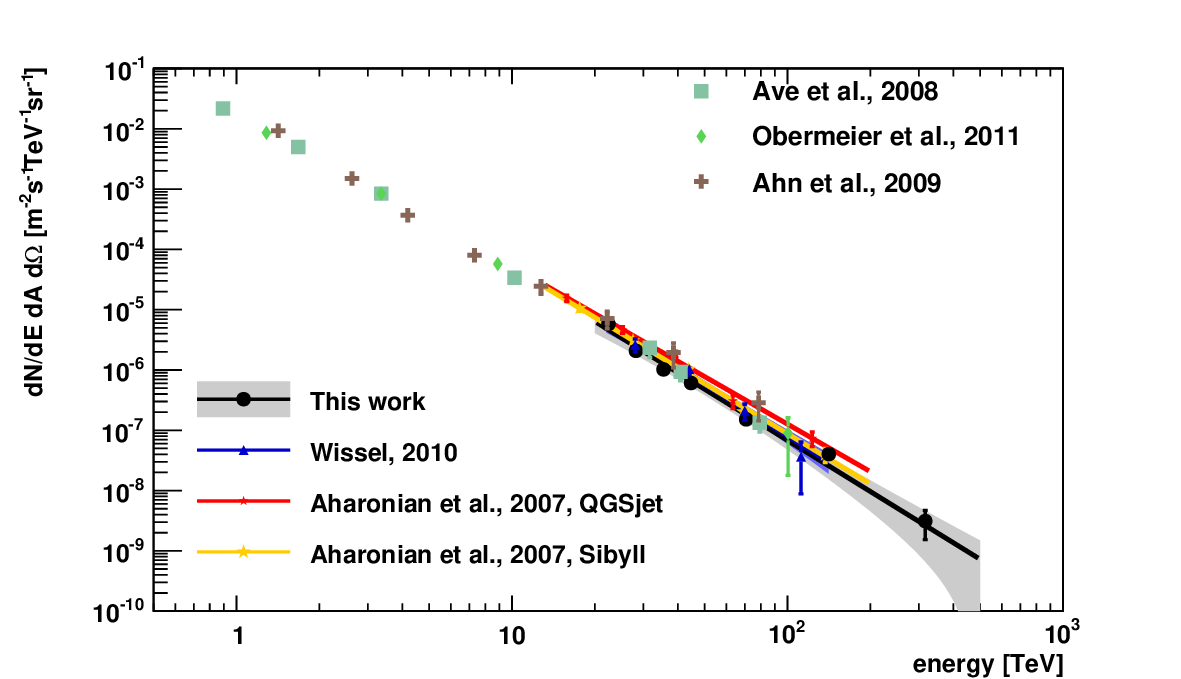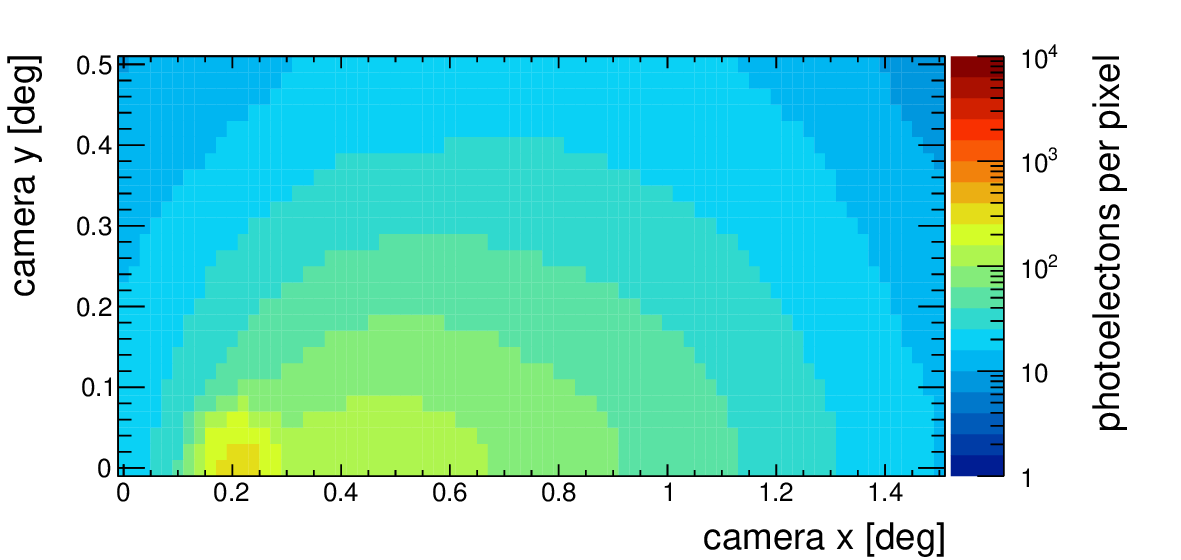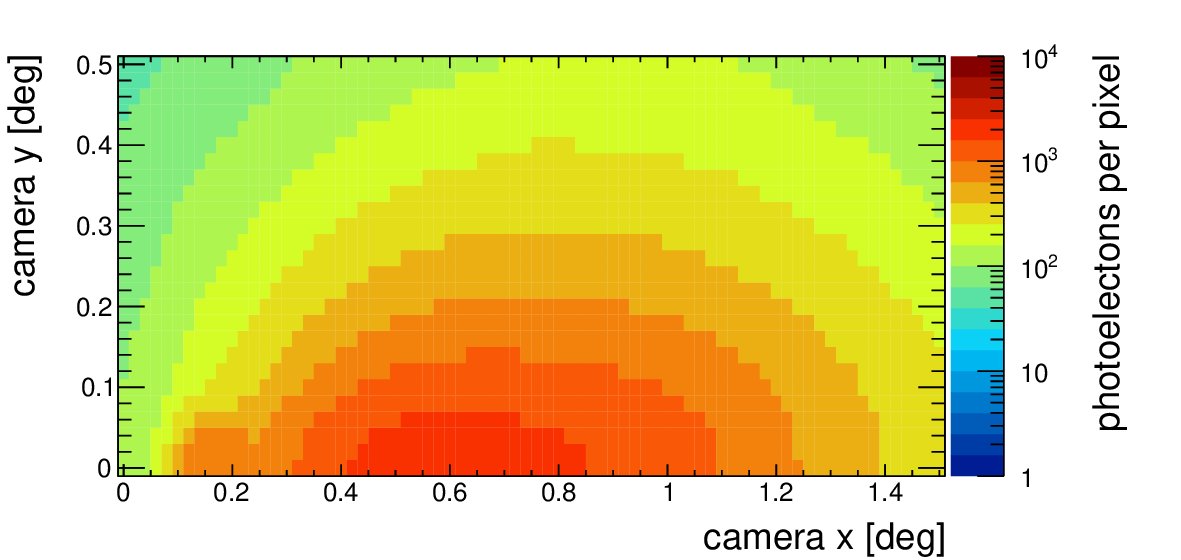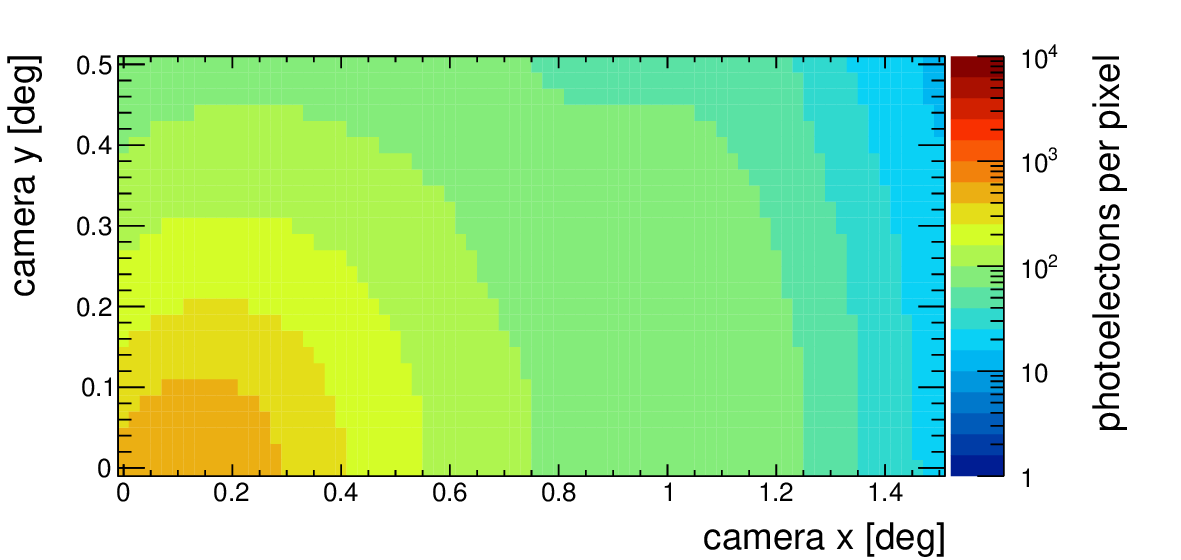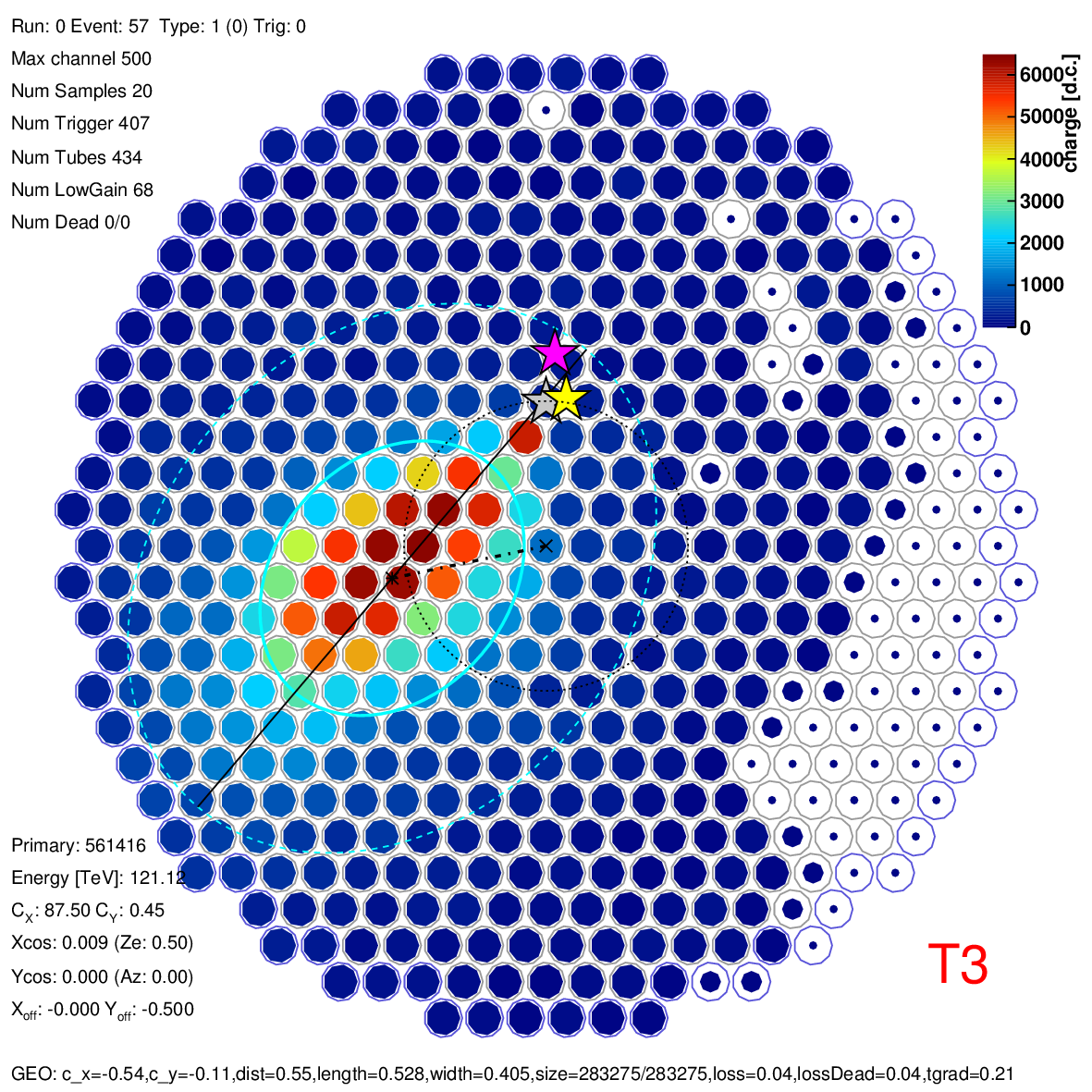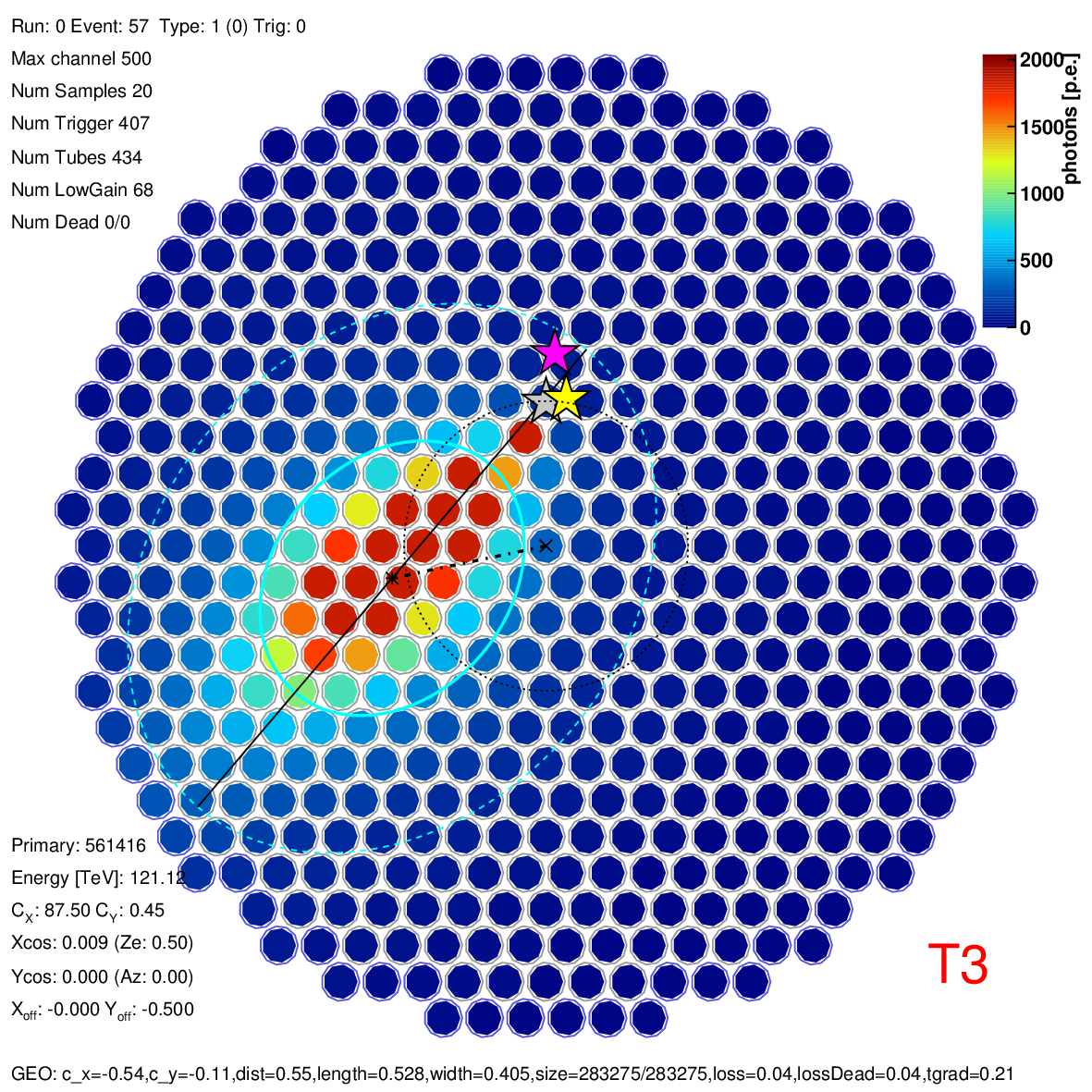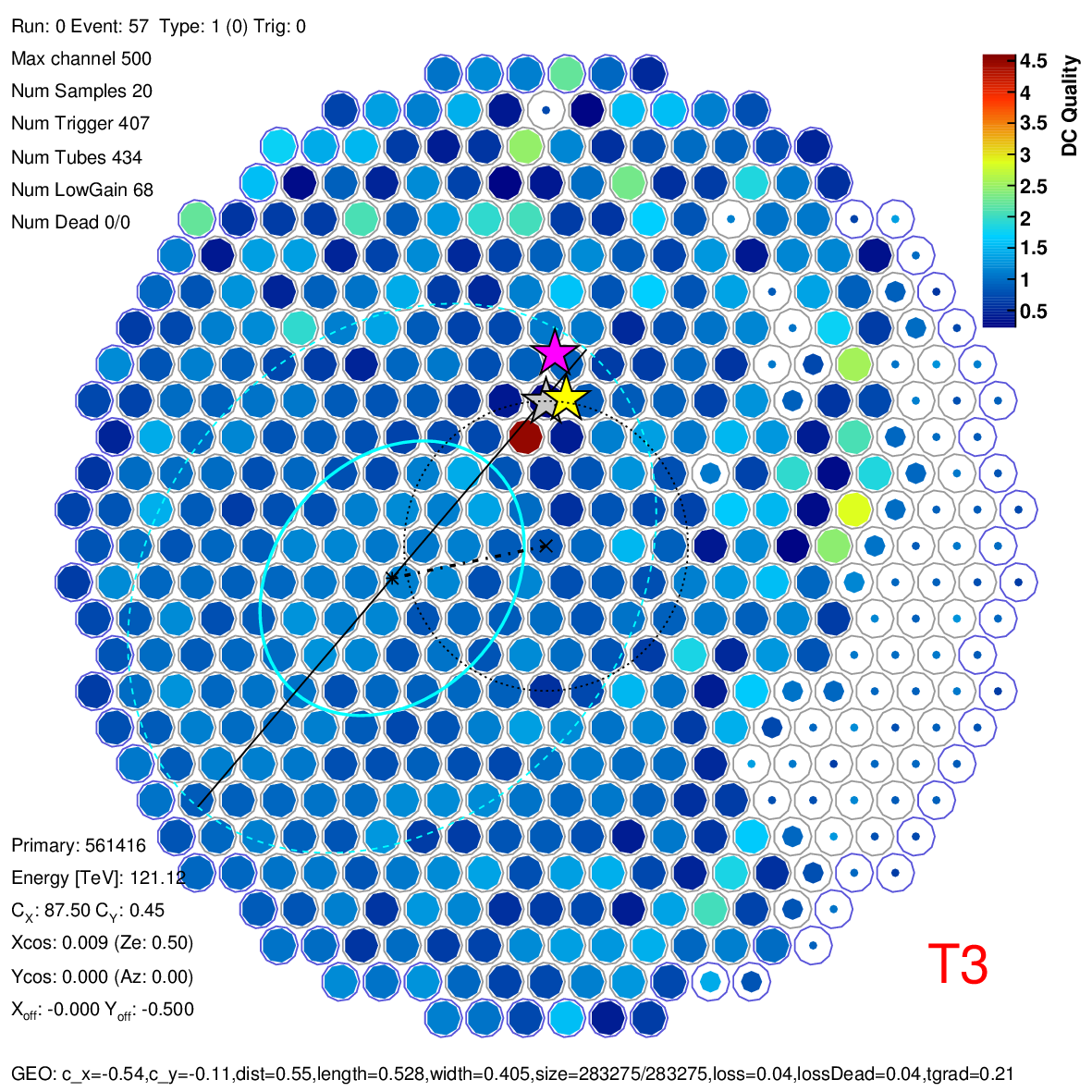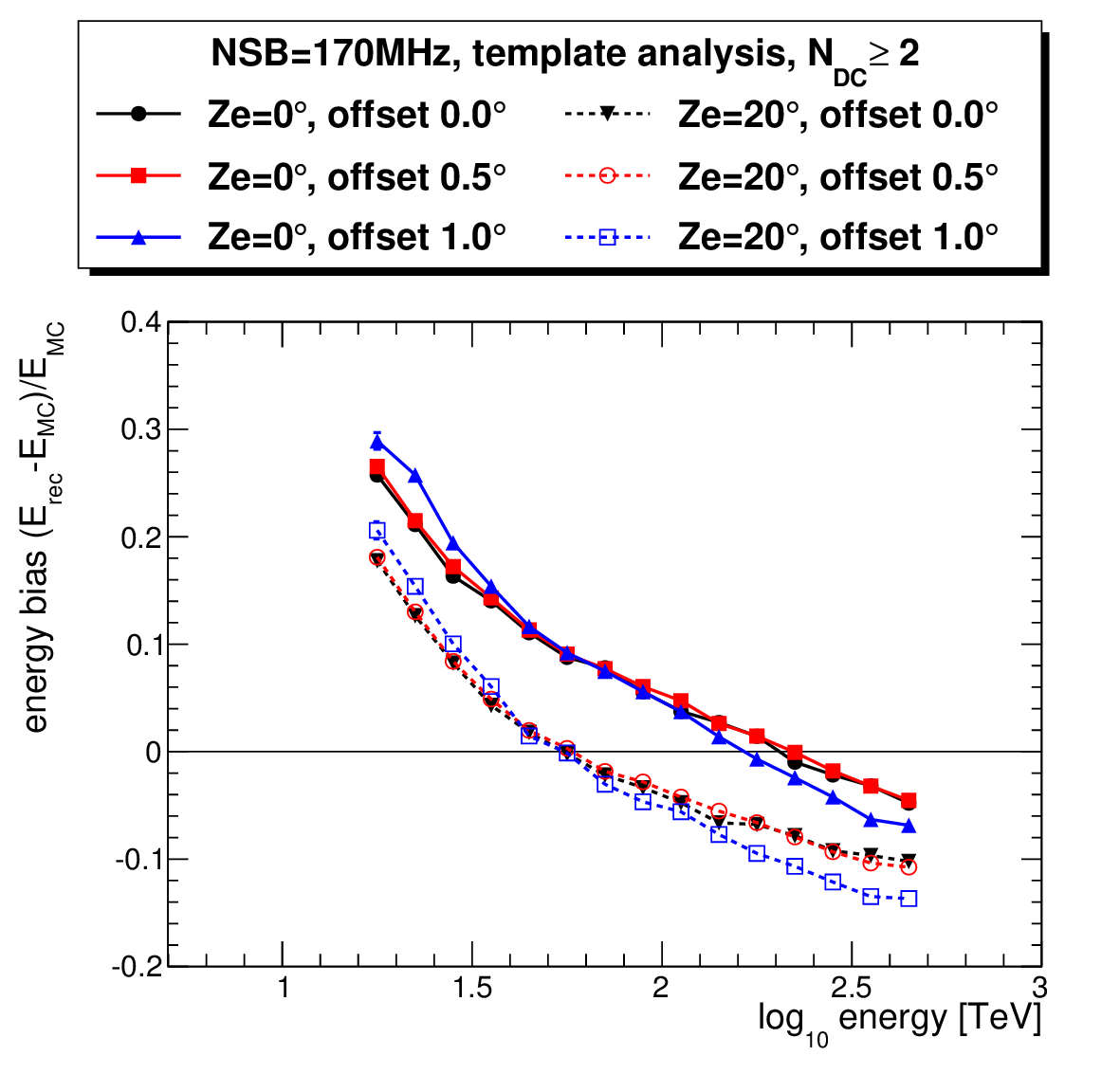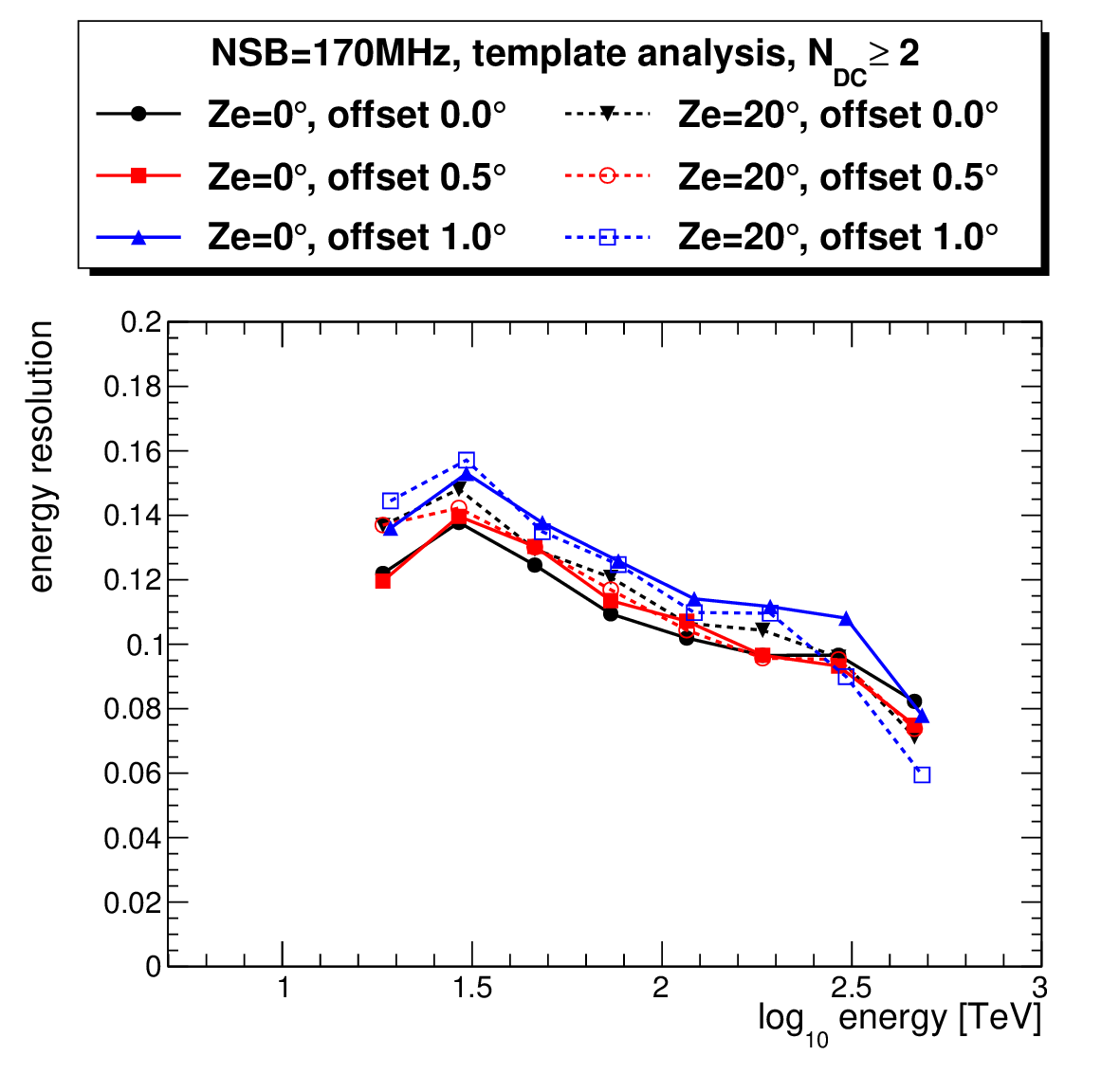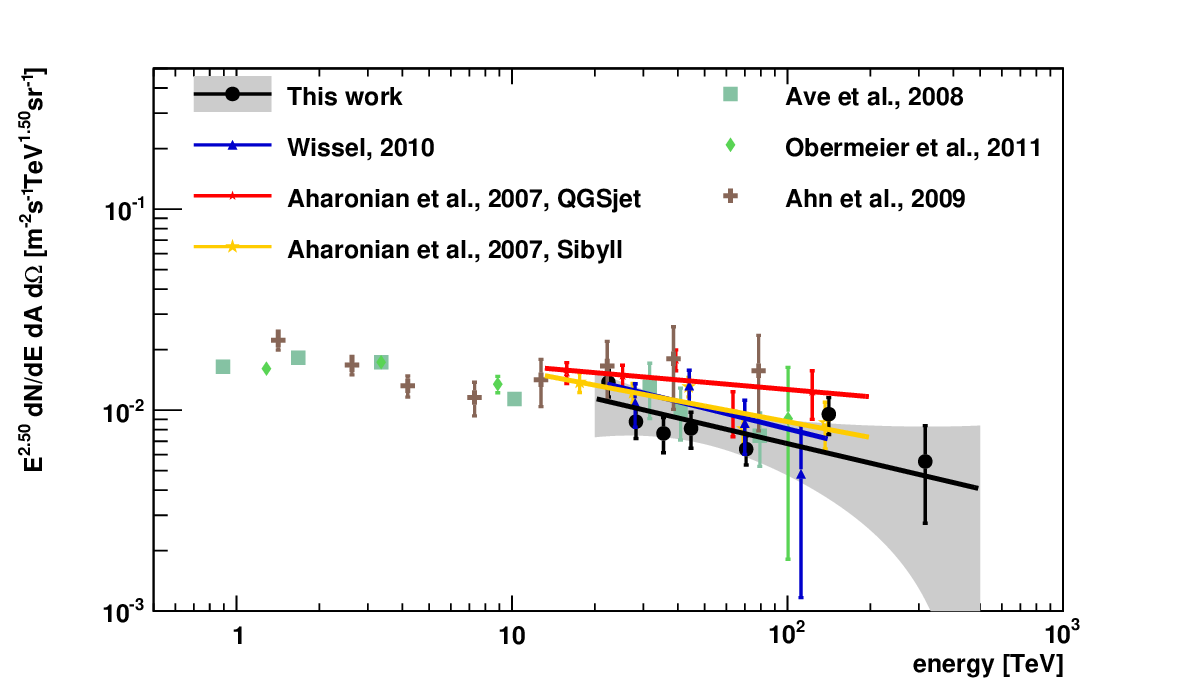We present a new measurement of the energy spectrum of iron nuclei in cosmic rays from 20 to 500 TeV. The measurement makes use of a template-based analysis method, which, for the first time, is applied to the energy reconstruction of iron-induced air showers recorded by the VERITAS array of imaging atmospheric Cherenkov telescopes. The event selection makes use of the direct Cherenkov light which is emitted by charged particles before the first interaction, as well as other parameters related to the shape of the
recorded air shower images. The measured spectrum is well described by a power law over the full energy range, with index gamma = 2.82 ± 0.30 (stat.) +0.24 -0.27(syst.) and normalization f0 = (4.82 ± 0.98 stat. +2.12 -2.70 syst ) × 10-7 / ( m2 s sr TeV) at pivot energy E0=50 TeV, with no indication of a cutoff or spectral break. The measured differential
flux is compatible with previous results, with improved statistical uncertainty at the highest energies.
Figure 1: Iron shower templates (mean number of photoelectrons (p.e.) per camera pixel) for the VERITAS cameras. All templates were produced for zenith angle 0°. The x-axis is chosen to be the symmetry axis of the image, the y-axis is perpendicular to the x-axis so that (0,0) marks the direction of the primary particle. The images are symmetrical about the y axis; only the top half (y > 0) of the images is plotted. These templates result from averaging several thousand simulated air showers. (a) Image template for a first interaction height of 33 km, an energy of 15 TeV and impact distance of 80 m. There is a contribution from DC light about 0.2° offset from the primary direction. (b) Image template for a first interaction height of 33 km, an energy of 80 TeV and impact distance of 80 m. There is a contribution from DC light about 0.2° offset from the primary direction. (c) Image template for a first interaction height of 33 km, an energy of 30 TeV and impact distance of 20 m. The image is nearly round; the contributions from DC emission and the air shower emissions overlap. (d) Image template for a first interaction height of 33 km, an energy of 30 TeV and impact distance of 200 m. The image is very elongated and there is no contribution from DC light since the impact
distance is too large.
Figure 2: Simulated 121 TeV iron shower image in one of the VERITAS telescopes. There is a visible contribution from DC light. Gray star: true shower direction. Pink star: shower direction reconstructed by the moment analysis. Yellow star: shower direction reconstructed by the template analysis. The white pixels do not contain a significant amount of signal on top of the pedestal. (a) Integrated charge per pixel. (b) Best-fit image template. (c) DC quality factor for the simulated image.
Figure 3: Response of the random forest classifier (stacked histograms) in the first energy bin from 100 to 200 TeV. ON and OFF regions have been marked.
Figure 4: Intrinsic energy bias and resolution of the template likelihood analysis method, evaluated on simulated iron showers. (a) Median energy bias (ratio of the difference between true and reconstructed energy to true energy). (b) Relative energy resolution (68% containment interval around median).
Figure 5: The energy spectrum of cosmic-ray iron nuclei as measured by the VERITAS experiment compared to previous measurements by VERITAS [25], H.E.S.S. [24], and the balloon-borne detectors TRACER [21,22] and CREAM [20]. Only statistical uncertainties are shown. (a) Differential flux. (b) Differential flux multiplied by E2.5 to improve the visual clarity.
